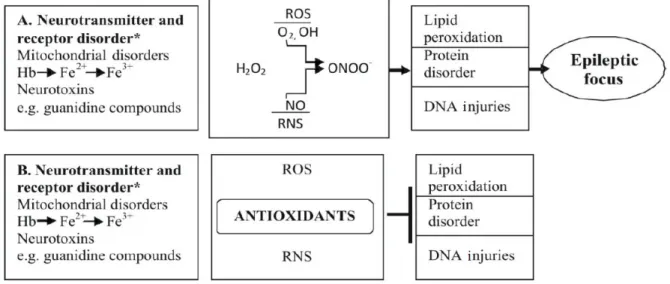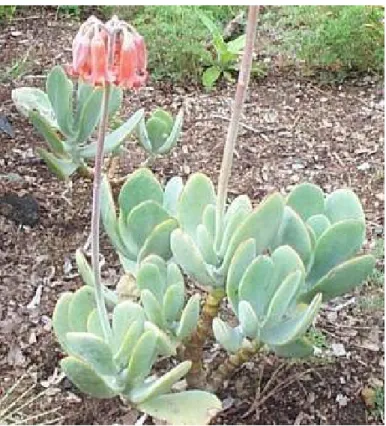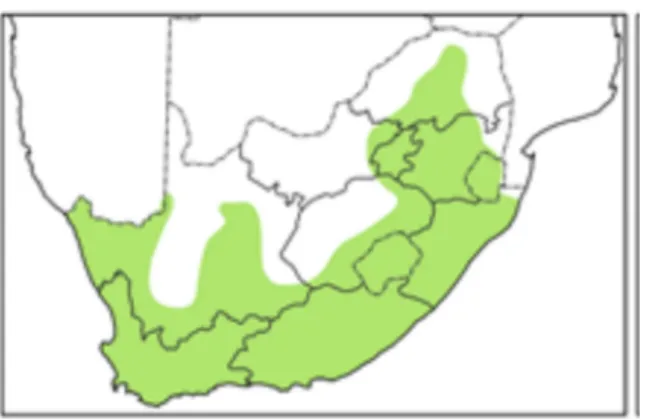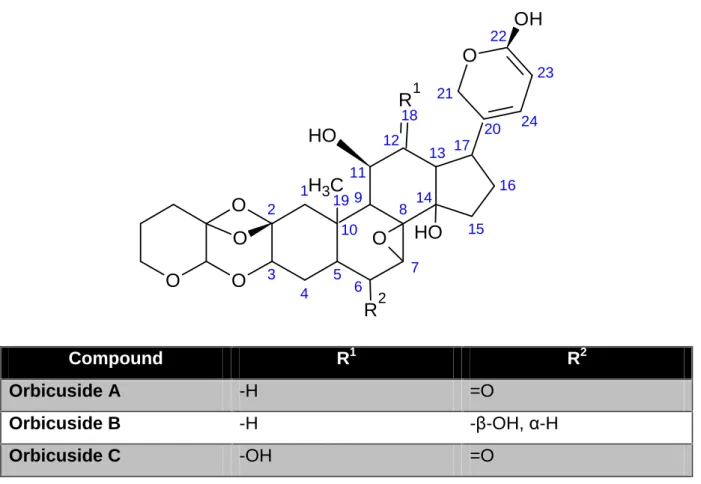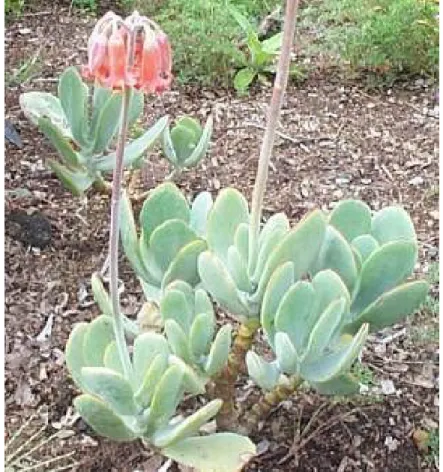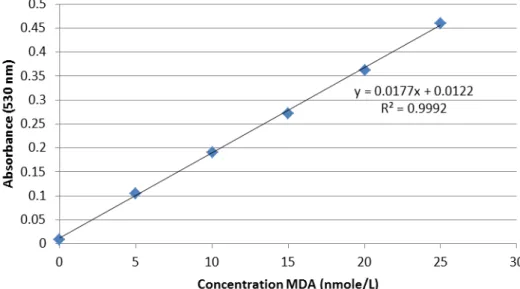Professor Jan du Preez, for help with the HPLC techniques and the isolation of the compounds. Peet Jansen van Vuuren, for his help in determining the MS spectra.
LIST OF ABBREVIATIONS
LIST OF TABLES
ABSTRACT
The methanol extract showed the best reduction of lipid peroxidation in rat brain homogenate, with fractions 1 and 2 showing greater reduction of lipid peroxidation than fraction 3. The methanol extract of Cotyledon orbiculata has high antioxidant activity, which may be due to the presence of malic acid. in the leaves of the plant.
OPSOMMING
- Aim of study
The increase in free radicals and oxidants and the reduced antioxidant defense system in the brain can lead to multiple neurodegenerative diseases such as Parkinson's disease, Alzheimer's disease and epilepsy (Mariani et al, 2005). Many neurodegenerative diseases, such as Parkinson's disease, Alzheimer's disease and epilepsy, are linked to oxidative damage and oxidative stress in the brain.
- What is a free radical?
- Types of free radicals .1 Singlet oxygen
- Superoxide radical (O 2 • - )
- Hydroxyl radical
- Nitric oxide
- Peroxynitrate
- Free radical production by biological systems
- Small cytoplasmic molecules
- Cytoplasmic proteins
- Membrane enzymes
- Mitochondrial electron transport system
- Microsomic electron transport systems
- Cytotoxicity of free radicals
- Effects on lipids
- Effects on proteins
- Effects on nucleic acids
- Effects on carbohydrates
- What is an antioxidant?
- Antioxidant defenses
- What is oxidative stress?
- Oxidative stress in neurodegenerative diseases
- Oxidative stress in Alzheimer ’s disease
- Oxidative stress in Parkinson ’s disease
- Background and history of epilepsy
- Neurotransmitters in epilepsy .1 GABA (gamma-aminobutyric acid)
- Glutamate
- Catecholamines
- Opioid peptides
- Oxidative stress and epilepsy
- Anti-epileptic drugs and method of action
- Plants used in the treatment of epilepsy
- Traditional medicine in South Africa .1 Healthcare in South Africa
- What is traditional medicine?
- The South African diversity
- Cotyledon orbiculata
- Classification and background
- Chemical constituents
- Dangers of Cotyledon orbiculata
- Uses of Cotyledon in traditional medicine
These free radicals have an altered chemical activity, mostly increased, than when bound to the original molecule. Free radicals are very important in the correct functioning of many biological reactions of any organism. In the case of the double helix conformation of DNA, deoxyribose sugars are the most targeted by free radicals due to the external positions of these sugars (Gill, 2010).
Scavengers trap free radicals and reactive species and their precursors in the aqueous phase to eliminate potential oxidative damage to the cellular environment (Foaud, 2008). Almost all natural processes in the body generate reactive oxygen species (ROS), and if the organism fails to neutralize them, these reactive oxygen species (ROS) accumulate and can react with other biomolecules and substrates in the body, creating an undesirable oxidation situation. stress (Sorg, 2004). Markers associated with oxidative stress have been found in the brains of Alzheimer's patients and increase the severity of symptoms (Mariani et al, 2005).
The oxidation of dopamine produces toxic semiquinones, which can also accelerate the normal degeneration of the brain. Increased levels of lipid peroxidation and DNA damage were also found in the brains of patients with Parkinson's disease. The cultural aspect in the treatment of epilepsy is very important in third world countries.
Abnormalities in central nervous system catecholamines have been reported to play a role in epilepsy. The shape, size and color of the leaves are directly affected by the type of soil, watering conditions, minerals in the soil, etc.
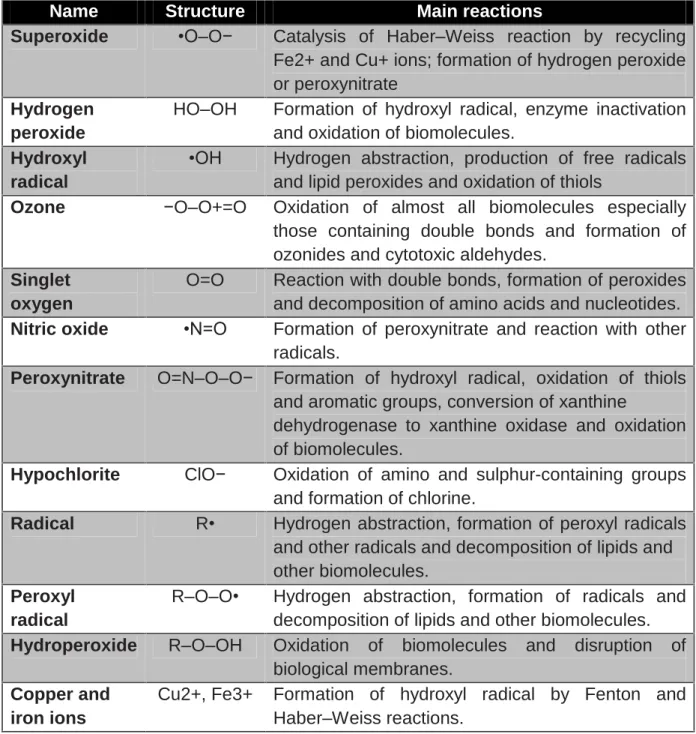
PREPARATION OF PLANT MATERIAL AND SELECTION OF FRACTIONS
- Introduction
- Collection and storage of plant materials
- Preparation of extracts from Cotyledon
- Isolation and separation of compounds
Leaves of Cotyledon orbiculata were collected from the botanical garden of the North-West University Potchefstroom campus. The plant was identified by Martin Smit, curator of the gardens, to be Cotyledon orbiculata L. The plant is located at the back of the gardens in a rocky area next to a pond and a waterfall.
Samples of the plant were collected throughout the study period as the plant grows throughout the year and is available in all seasons. Leaves are cut close to the stem of the plant to maximize the size of the leaves and to make new space for the leaves to grow. The extract obtained was a very dark green color with a slight white residue at the bottom of the flask.
Isolation and separation of the compounds in the extract was performed on an Agilent 1100 series HPLC using a Phenomonex Synergi Fusion RP 4 µ (250 mm x 10 mm) column with semi-prep security guard cartridges (Fusion RP 10x10) and security guard cartridge holders (10 mm ) ) connected to an Agilent 1200 Series fraction collector. After collecting a sufficient volume of the samples, the mobile phase was evaporated from the solution using a high vacuum evaporator until the sample was viscous. The three fractions were also analyzed by HPLC to determine the purity of the samples.
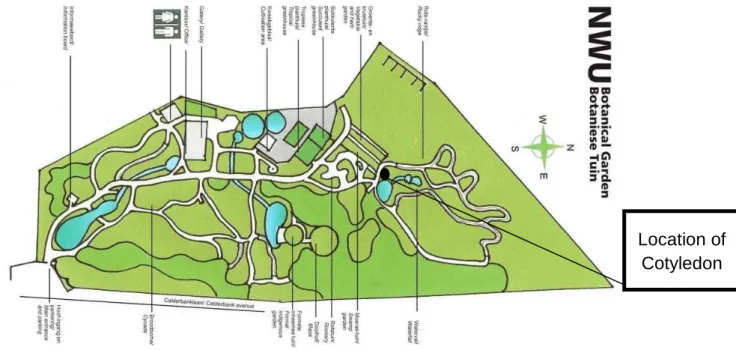
IN VITRO ASSAYS 4.1 Assays selected for experimentation
- TBA (thiobarbituric acid) assay
- Preparation of extracts
- Animals
- Chemicals and reagents
- Preparation of standard curve
- Brain homogenates
- Assay
- NBT (nitroblue tetrazolium) assay
- Preparation of extracts
- Animals
- Chemicals and reagents
- Preparation of standard curves .1 NBD Standard curve
- Brain homogenates
- Assay
- Toxicity testing
- Chemicals and reagents
- Cell preparation
- Method
PBS (Phosphate Buffer) – the PBS was prepared in the same way as for the NBT test, see 4.2.4. The tubes were remixed and 255 µl of the top layer was removed and placed in a 96 well cell culture plate. The PBS was filtered into the laminar flow chamber before use to prevent infection of the cells.
The cell suspension was then added to a 150 ml cell culture flask (with a vent cap) containing 20 ml of growth medium. The cell growth medium was changed by removing the cells from the incubator and spraying the culture flasks with a 70% ethanol solution to disinfect the exterior of the flasks and placing them in a laminar flow chamber. To divide one flask into two, 5 ml of growth medium was added to the triptan EDTA cell suspension and the solution was mixed with a pipette to ensure even distribution of cells throughout the suspension.
26 mL of growth medium was added to each of the new flasks to achieve a total volume of 30 mL of cell suspension in each flask (this formula can be adjusted to split the cells into more than two fractions). 50 µl of cell suspension was taken from the stock suspension and added to 450 µl of growth medium. The plate was then sprayed with a 70% ethanol solution to decontaminate the outer surfaces of the plate and placed in an incubator for 24 h.
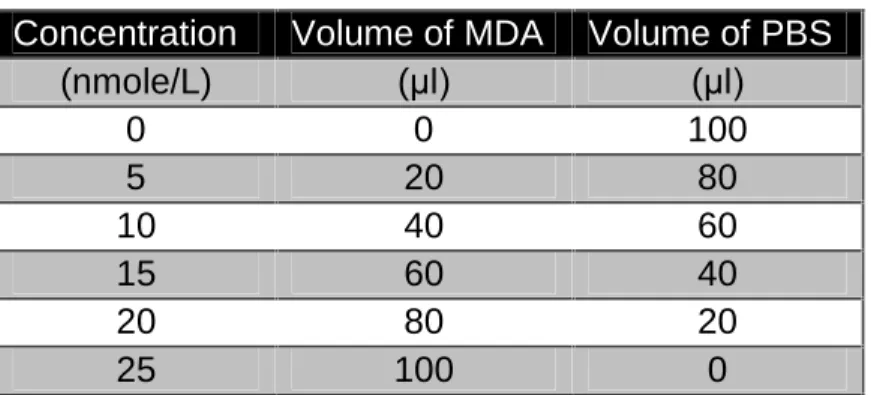
- Statistical analysis
- Discussion
- Results of the NBT assay
- Statistical analysis
- Discussion
- Results of toxicity testing
- Statistical analysis
- Discussion
The methanol extract of Cotyledon orbiculata showed very good antioxidant properties over the entire concentration range tested. All the fractions and the methanol extract had the same pattern with antioxidant activity increasing with higher concentrations of extract up to 1.25 mg/ml. The higher concentrations (fraction 1 and 2 at 2.5 mg/ml and fraction 3 at 1.25 mg/ml and 2.5 mg/ml) showed reduced antioxidant activity.
The methanolic extract of Cotyledon orbiculata had high antioxidant effects in the entire range of concentrations. All fractions of Cotyledon orbiculata showed significantly different activity compared to the toxin diformazan µmol/mg). The methanol extract of Cotyledon orbiculata showed toxicity at the highest concentration of 10 mg/ml, and was slightly toxic even at a concentration of 2 mg/ml.
The effect of the extracts on the neuroblastoma cells is correlated with toxicity and is therefore related to the safe use of the extracts.
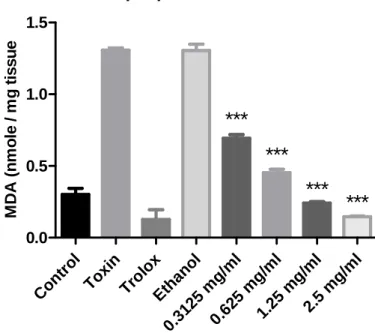
STRUCTURE DETERMINATION\
- Instrumentation
- Nuclear magnetic resonance spectroscopy
- Mass spectroscopy
- Infrared spectroscopy
- Characterisation of compound
Comparing the data obtained for the compound (WR1), which is the main chemical component present in fraction 2, with the data in the literature, this compound may possibly be an organic acid ester. This compound was compared to diethyl malate (diethyl 2-hydroxysuccinate) found in the Spectral Database for Organic Compounds (SDBS) under SDBS number 10350. Comparison of 1H and 13C spectra of diethyl malate with spectra obtained from WR1, total spectral data correlation .
This may be due to the fact that there was still a high concentration of water in the sample (Appendix 7). The accurate mass of diethyl malate, found in literature and in the spectral database, was recorded as 191.11 g/mol. A sample of WR1 was then compared with the methanol extract of Cotyledon to determine its presence in the methanol extract of the plant.
The dominant peak of WR1 was compared with the crude extract and was identified as an artifact likely generated during experimental or storage conditions. Diethyl malate is an organic acid ester that can be generated from malic acid, which is present in large amounts in the vacuoles of cotyledon leaves (Barker et al, 1997). Diethyl malate, which is an analytical artifact sometimes obtained by HLPC separation of plant extracts, can be derived from a reaction occurring between malic acid and ethanol (Middleditch, 1989).
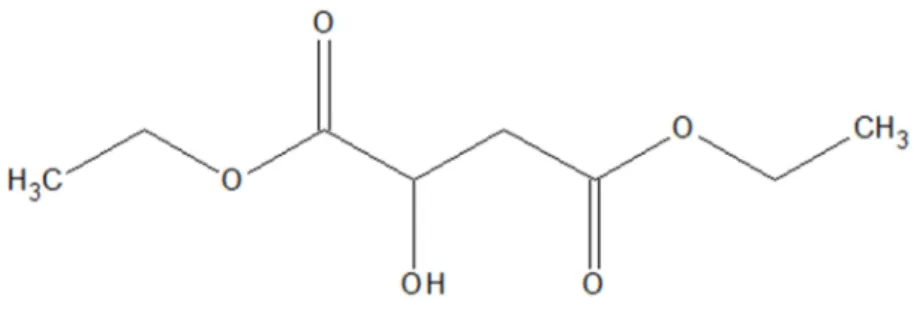
CONCLUSION
The efficiency of this treatment can be based on the fact that Cotyledon orbiculata contains antioxidants that can improve the pathogenesis of the disease. Cotyledon orbiculata was used in this study to determine the antioxidant properties of the methanol extract and its active ingredients. The methanol extract was prepared by extracting the freeze-dried leaves of Cotyledon orbiculata with methanol in a Soxhlet apparatus.
The methanol extract and the three fractions of Cotyledon orbiculata were tested for antioxidant effects using the nitro blue tetrazolium test and the thiobarbituric acid test, both of which are some of the most popular tests to assess antioxidant effects (Ottino & Duncan, 1997). The methanol extract of Cotyledon orbiculata showed high antioxidant activity in both tests compared to that of the collected fractions. This antioxidant activity may be due to the fact that Cotyledon orbiculata has a high concentration of malic acid in the vacuoles of the cells, which is a known antioxidant (Kayashima & Katayama, 2002).
The three fractions of Cotyledon orbiculata had less activity than the methanol extract, but still showed some potential as good antioxidants. This artifact was then compared to a fresh methanol extract of the plant injected on HPLC and it was found that the diethyl malate was not a molecule normally present in the methanol extract of Cotyledon orbiculata. The rationale for the use of Cotyledon orbiculata in the treatment of epilepsy could not be determined due to the isolation of an artifact, diethyl malate, obtained from the fraction.

Protective effect of β-carbolines and other antioxidants on lipid peroxidation due to hydrogen peroxide in rat brain. Lipoic acid prevents oxidative stress in vivo and in vitro by an acute hyperphenylalaninemia chemically induced in rat brain. Effect of vitamin E succinate on free radical formation, lipid peroxidation levels and cyclooxygenase activity in murine melanoma cells.
Antioxidant effects of alpha tocopherol, ascorbic acid and L-methionine on lead-induced oxidative stress in rat liver, kidney and brain. An update on the oxidative stress theory of aging: Does oxidative stress play a role in aging or healthy aging. SOUTH AFRICAN NATIONAL BIODIVERSITY INSTITUTE, SOUTH AFRICAN MEDICAL RESEARCH COUNCIL & UNIVERSITY OF THE WESTERN CAPE.
Activity of traditional South African sedative and potentially CNS-acting plants in the GABA-benzodiazepine receptor assay. Overview of plants with CNS effects used in traditional South African medicine against mental illness. Bredasdorp/Elim region of the Southern Overberg in the Western Cape Province in South Africa.
APPENDIX
